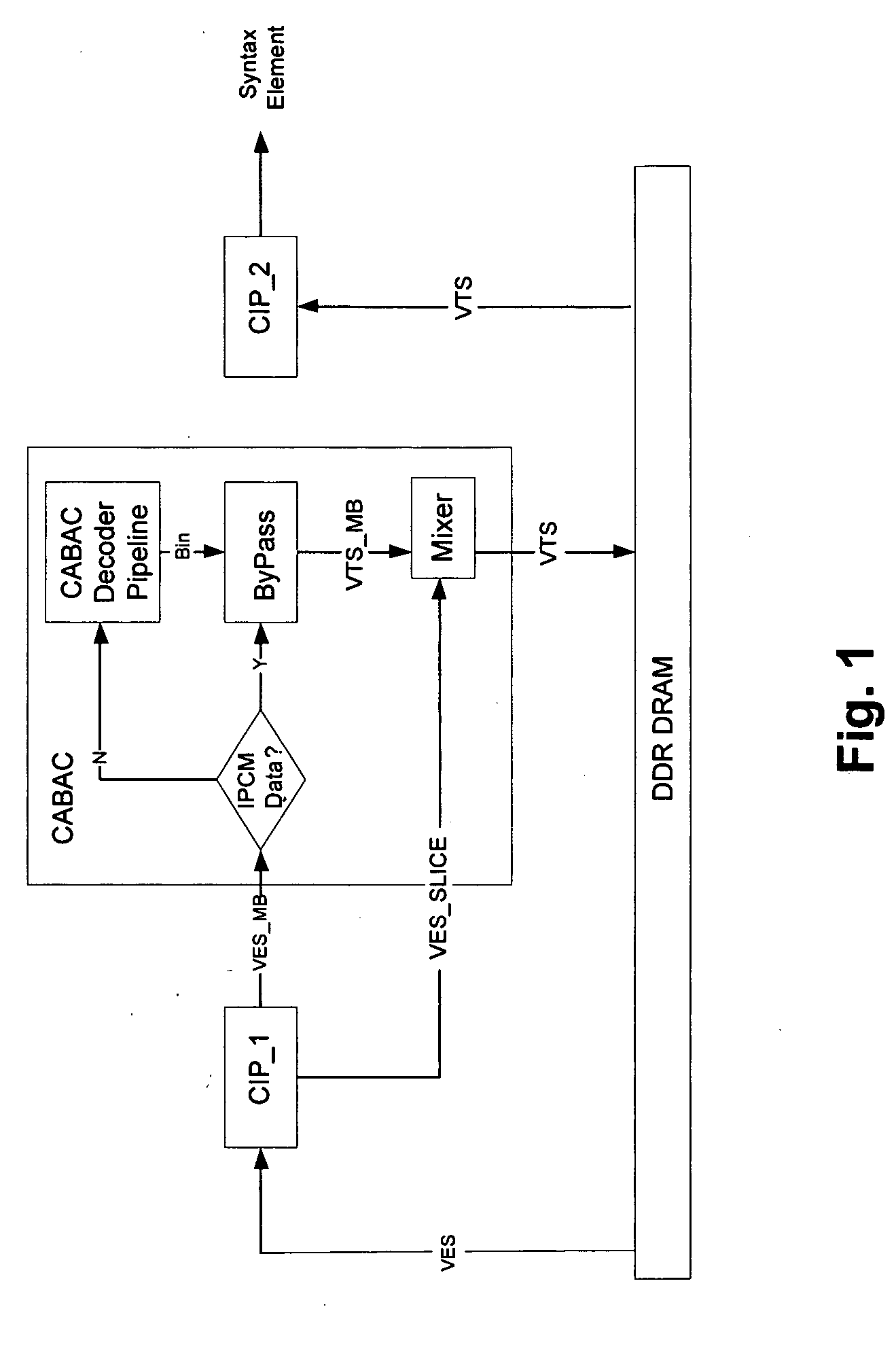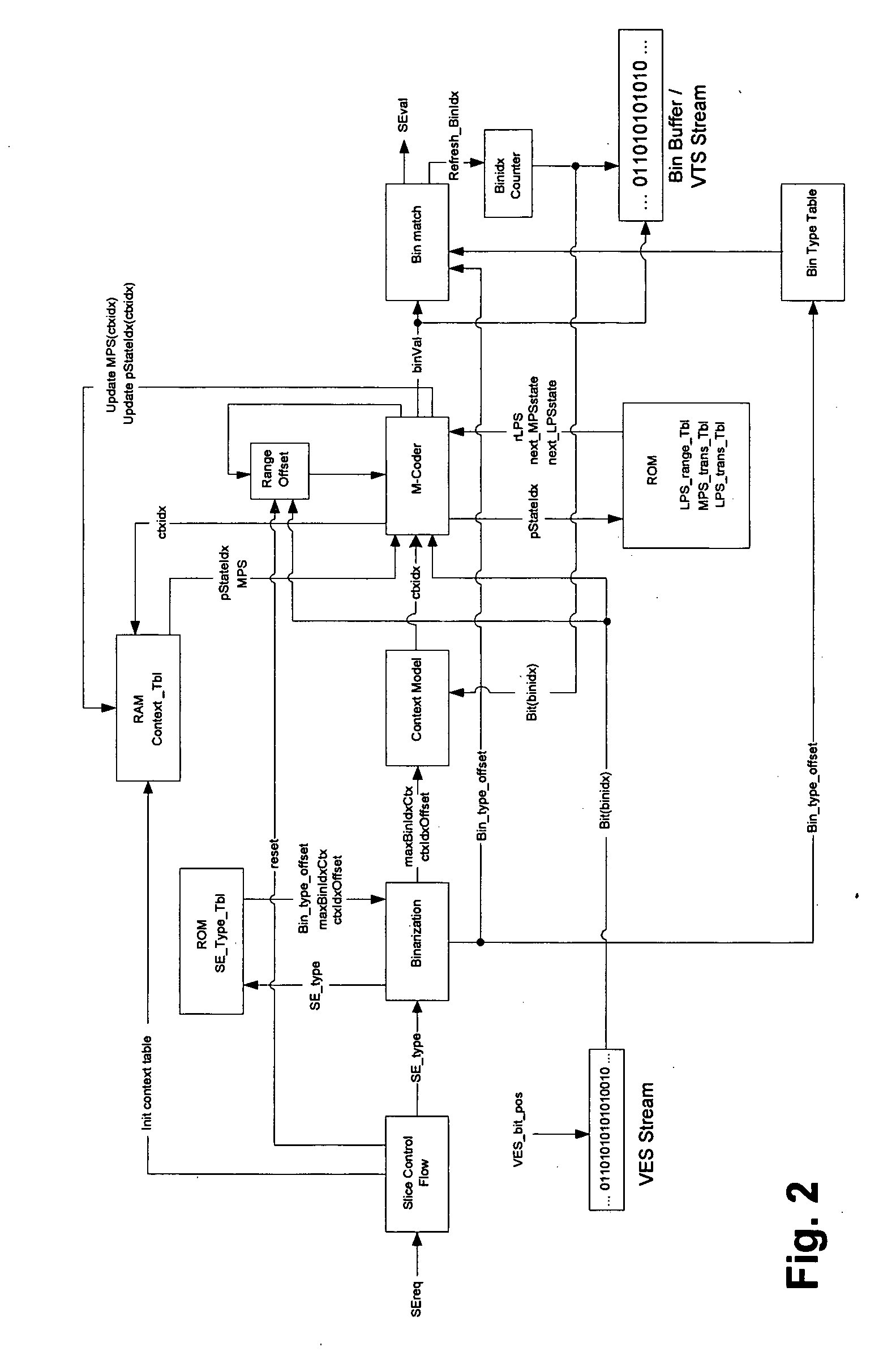Two pass architecture for H.264 CABAC decoding process
a cabac decoding and two-pass technology, applied in the field of video compression, can solve the problems of limiting the efficiency of arithmetic coding, information loss, and imprecise interval range updating and probability prediction rules used in qm-coder implementation, and achieves higher performance throughput for syntax element parsing and elimination of dependency
- Summary
- Abstract
- Description
- Claims
- Application Information
AI Technical Summary
Benefits of technology
Problems solved by technology
Method used
Image
Examples
Embodiment Construction
[0026] An architecture capable of stream parsing of the H.264 Content Based Adaptive Binary Arithmetic Coding (CABAC) format is disclosed. The architecture employs a two pass dataflow approach to implement the functions of CABAC bit parsing and decoding processes based on the H.264 CABAC algorithm. The architecture can be implemented, for example, as part of a system-on-chip (SOC) solution for a video / audio decoder for use in high definition television broadcasting (HDTV) applications. Other such video / audio decoder applications are enabled as well.
[0027] In one such embodiment, hardware components required in the first pass of the CABAC bit parsing and processing are partitioned in two modules: a first code index parser (CIP) module and a CABAC module. The first CIP module is used for parsing and decoding the syntax elements from the input video elementary stream (VES) at the levels above the slice data level. The CABAC module is used for unwrapping the strong dependency of arithm...
PUM
 Login to View More
Login to View More Abstract
Description
Claims
Application Information
 Login to View More
Login to View More - R&D
- Intellectual Property
- Life Sciences
- Materials
- Tech Scout
- Unparalleled Data Quality
- Higher Quality Content
- 60% Fewer Hallucinations
Browse by: Latest US Patents, China's latest patents, Technical Efficacy Thesaurus, Application Domain, Technology Topic, Popular Technical Reports.
© 2025 PatSnap. All rights reserved.Legal|Privacy policy|Modern Slavery Act Transparency Statement|Sitemap|About US| Contact US: help@patsnap.com



